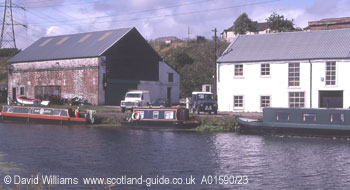Traffic was able to use the canal from 1773 onwards and it readily became busy with various types of vessels carrying cargoes such as timber, grain, sugar, textiles and coal; on some occasions west-coast fishing boats used it as they headed eastwards to take advantage of the arrival of the herring shoals. The canal was very profitable at times and in 1816 the dividend was an enormous twenty-five per cent. However, its success was challenged by many factors, including competition from the railways and the deepening of the River Clyde which allowed large vessels directly into the city.
A variety of vessels were used on the canal over the years, including horse-drawn boats, paddleboats, propeller-driven craft and even locomotive-hauled boats; although the introduction of these newer `high-tech` types of boats greatly increased the speeds at which cargoes could be moved they also caused more erosion of the banks and consequently increased maintenance costs.
Railway companies were seen by many people as deadly rivals to the canals but, to the landed interests who could make money out of both forms of transport, the amalgamation of railways and canals made profitable sense. As a result, in the late 1860s the Caledonian Railway Company joined with the Forth and Clyde Canal, the Monkland Canal and some smaller railway companies.
This article is based on the guidebook "The Glasgow Guide".

This is the Hamiltonhill Basin which is one of the busiest parts of the canal. These workshops were built in 1790 and are still used by maintenance staff. Maintenance craft and houseboats are moored in the basin.